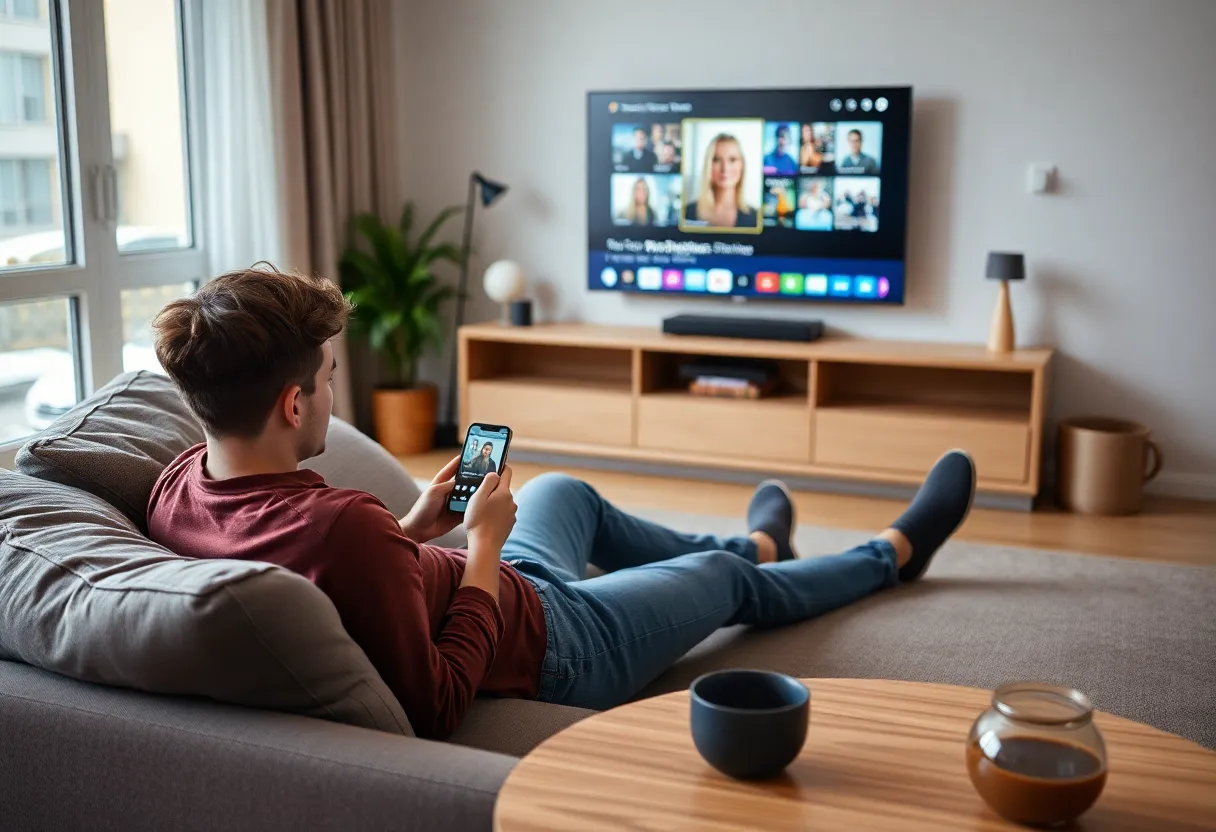News Summary
As we approach 2025, media consumption habits are evolving, with consumers averaging six hours a day engaging with media. The competition between streaming services and social media platforms is intensifying, leading to a decline in pay TV subscriptions and a significant shift in advertising strategies. With younger generations opting for budget-friendly streaming options and ad-supported services becoming more popular, traditional studios are facing challenges as they adapt to these changing preferences.
The Changing Landscape of Media Consumption in 2025
Picture this: on any given day, the average consumer is sipping their morning coffee while scrolling through social media, then catching up on the latest streaming series in the evening. It’s no surprise then that consumers are spending a whopping six hours a day engaged with media and entertainment! As we look ahead into 2025, some intriguing trends reveal how the world of entertainment is evolving, particularly with the fierce competition brewing between streaming services and social media platforms.
The Shift in Advertising Dollars
Have you noticed that the ads that pop up during your binge-watching marathons are often more captivating? It turns out, media and entertainment companies are in fierce competition for half of the U.S. ad spending. Recently, there’s been a noticeable shift towards social video platforms, which are now offering a rich variety of free content complemented by cutting-edge advertising technology. This has drawn audiences away from traditional film studios faster than you can say “streaming service.”
Declining Pay TV Subscriptions
In the past few years, there’s been a remarkable change in viewing habits. The number of pay TV subscriptions has plummeted from 63% to 49%. Young people, especially those from Generation Z (23%) and millennials (18%), are leading the charge to cancel their cable subscriptions. Why? It all comes down to price. With the high costs of traditional cable compared to Subscription Video on Demand (SVOD) services, many are opting for the more affordable options available.
Budgeting for Entertainment
The financial landscape is also impacting entertainment choices. With a median household income of $80,000 in the U.S., many consumers are reassessing their spending—prioritizing essential expenses over luxuries like multiple media subscriptions. As payment for traditional cable often hovers around $125 per month, it’s no wonder consumers are turning to more budget-friendly streaming services that average about $69 for four subscriptions combined.
Understanding Content Value
Interestingly, despite the plethora of options, many viewers feel that the content they get from SVOD services isn’t worth the price tag. Research indicates that 41% of consumers believe the value of content on SVOD is lacking, a slight uptick from the previous year. This discontent is reflected in the high subscription churn rates of 39%, showing that many subscribers are quick to cancel when they’re not satisfied.
Ad-Supported Tiers and Changing Preferences
In response to this growing dissatisfaction, streaming services are now turning towards ad-supported tiers to reel in even more subscribers. In fact, over half of all SVOD subscribers are utilizing ad-supported services, which has increased by eight percentage points recently. This indicates a shift in consumer attitudes as they become more adaptable to the idea of advertisements in exchange for free or cheaper content.
The Rise of Social Media Influence
The influence of social media cannot be dismissed, especially for younger audiences. Generation Z and millennials find social media ads to be much more relevant and engaging compared to traditional media advertisements. This trend has led many consumers to believe they receive better content recommendations through social platforms than through their SVOD services.
Rising Challenges for Traditional Studios
The pressure on traditional studios is mounting, forcing them to rethink their strategies. They’re exploring bundling strategies and collaboration opportunities to draw in audiences and lower costs in an effort to stay competitive. With escalating production and marketing costs, these companies need to innovate quickly to keep up with the highly engaging content offered by social platforms.
The Road Ahead
As we enter a new era of entertainment, it’s clear that the competitive landscape is radically shifting. Viewers are evolving and so are their preferences. Traditional cable and satellite services are losing steam, and those beautiful television series may need to find new homes in this bustling digital ecosystem. So, grab your popcorn and settle in—it’s going to be an exciting journey ahead in the world of media!
Deeper Dive: News & Info About This Topic
HERE Resources
Important Water Advisory for Columbia Residents
Exciting Digital Marketing Trends to Watch in 2025
Biden Reflects on Misinformation and Infrastructure Issues
Additional Resources
- Deloitte: United States Economic Outlook Analysis
- Wikipedia: Social Media
- Deloitte: 2025 Digital Media Trends
- Google Search: Digital Media Trends
- Deloitte: Thriving in Leadership Tension and Uncertainty
- Encyclopedia Britannica: Streaming Media
- Deloitte: Closing the Experience Gap
- Google News: Streaming Services Competition
Author: STAFF HERE Chapin
CHAPIN STAFF WRITER The CHAPIN STAFF WRITER represents the experienced team at HEREchapin.com, your go-to source for actionable local news and information in Chapin, Lexington County, and beyond. Specializing in "news you can use," we cover essential topics like product reviews for personal and business needs, local business directories, politics, real estate trends, neighborhood insights, and state news affecting the area—with deep expertise drawn from years of dedicated reporting and strong community input, including local press releases and business updates. We deliver top reporting on high-value events such as the Chapin Christmas Parade, Fourth of July Celebration, and the Chapin Fall Festival. Our coverage extends to key organizations like the Chapin Chamber of Commerce and the Lexington School District One, plus leading businesses in retail and recreation that power the local economy such as Lake Murray Tourism and the Chapin Visitor Information. As part of the broader HERE network, including HEREaiken.com, HEREbeaufort.com, HEREchapin.com, HEREcharleston.com, HEREclinton.com, HEREcolumbia.com, HEREgeorgetown.com, HEREgreenwood.com, HEREgreenville.com, HEREhiltonhead.com, HEREirmo.com, HEREmyrtlebeach.com, HEREnewberry.com, HERErockhill.com, HEREspartanburg.com, HEREaustin.com, HEREcollegestation.com, HEREdallas.com, HEREhouston.com, and HEREsanantonio.com, we provide comprehensive, credible insights into South Carolina's dynamic landscape.







